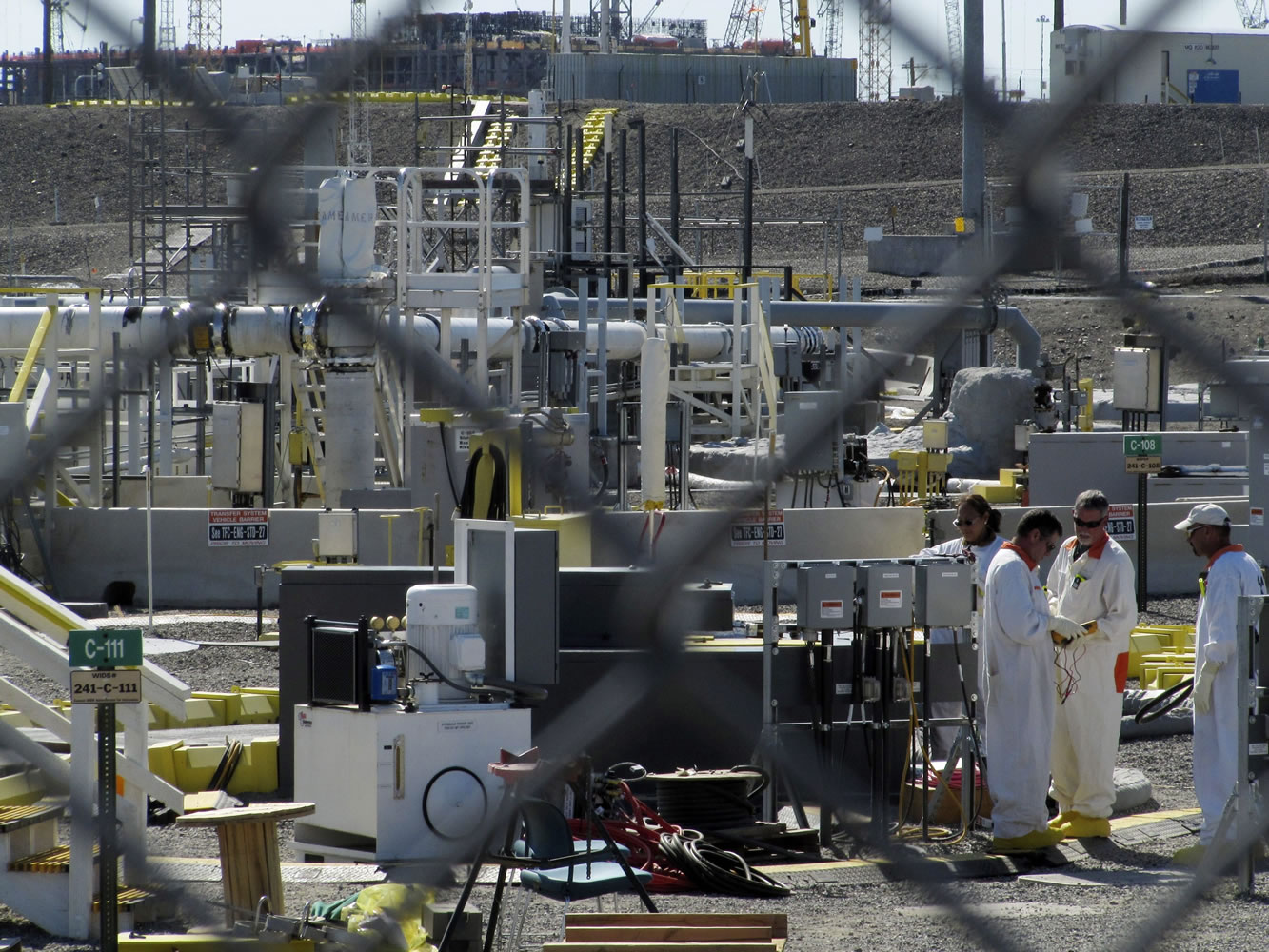SPOKANE — The cleanup of the nation’s largest collection of radioactive waste from the production of nuclear weapons was supposed to be nearing an end by now.
Twenty-five years ago, a landmark agreement was signed to deal with the millions of gallons of waste at the Hanford Nuclear Reservation. More than $30 billion has been spent under the so-called Tri-Party Agreement signed by the U.S. Department of Energy, the U.S. Environmental Protection Agency and the Washington state Department of Ecology.
If everything had gone according to plan, the work would be only about five years away from completion. But Hanford officials are still decades and tens of billions of dollars away from finishing the cleanup of the radioactive mess.
What is Hanford?
The sprawling Hanford site was created north of Richland during World War II to make plutonium for atomic bombs. The site is half the size of Rhode Island, and included nine nuclear reactors that produced nuclear weapons material during the Cold War. Left behind is the nation’s largest volume of nuclear defense waste, including 177 giant underground storage tanks that contain the most toxic radioactive brew. The site has more than 8,000 employees.
What is the agreement?
Faced with an unprecedented cleanup problem, the federal and state governments signed the Tri-Party Agreement on May 15, 1989. It had three main goals, said John Price, Tri-Party Agreement manager for the state Department of Ecology in Richland: Define the work to be done; schedule that work; smooth relations between the three agencies, so they were not constantly battling in court.
Why is it taking so long?
Price points to a combination of the scientific complexity of the work and the limits of the federal budget. The cleanup budget is about $2 billion per year, not enough to meet agreement deadlines, he said. It needs to be $3 billion to $3.5 billion a year to stay on schedule, he said. Half of Hanford spending goes to “keeping the lights on,” he said, with the other half going to actual cleanup work.
Has anything been done?
The progress of the past 25 years is easy to measure. Hanford has gone from 586 square miles of cleanup work to 107 square miles left as of last November. In addition, 2,300 tons of spent nuclear fuel has been moved away from the Columbia River. There have been 836 separate waste sites remediated, 401 facilities demolished and six of nine plutonium production reactors have been cocooned.
So what’s the problem?
Critics say the agreement has outlived its usefulness. “We are constantly frustrated by how easily the Department of Energy slips out of agreements in the Tri-Party Agreement,” said Tom Carpenter, director of the watchdog group Hanford Challenge. Between 1989 and 2013, there were 646 amendments to the deal, and more are looming. Most of the changes involved pushing back deadlines because of technical difficulties. Price predicted that cleaning up Hanford would take 40 to 50 more years, with the most difficult work — emptying 56 million gallons of waste from the underground tanks — still left.



